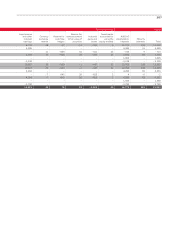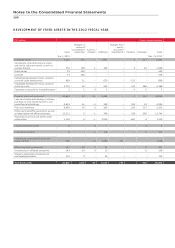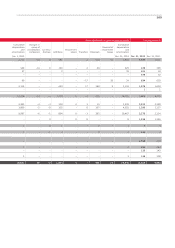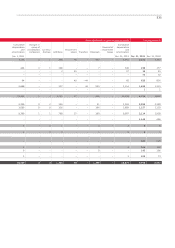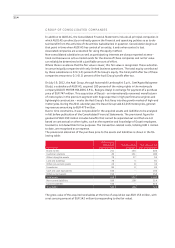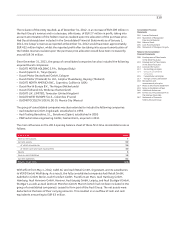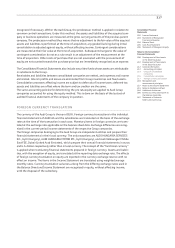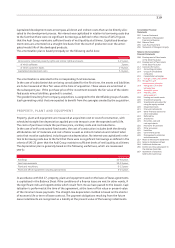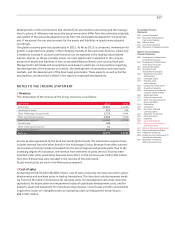Audi 2012 Annual Report Download - page 214
Download and view the complete annual report
Please find page 214 of the 2012 Audi annual report below. You can navigate through the pages in the report by either clicking on the pages listed below, or by using the keyword search tool below to find specific information within the annual report.
217
Consolidated Financial
Statements
202 Income Statement
203 Statement of Recognized
Income and Expense
204 Balance Sheet
205 Cash Flow Statement
206 Statement of Changes in Equity
Notes to the Consolidated
Financial Statements
208 Development of fixed assets
in the 2012 fiscal year
210 Development of fixed assets
in the 2011 fiscal year
212 General information
212 Accounting principles
214 Group of consolidated
companies
216 Consolidation principles
217 Foreign currency translation
218 Recognition and
measurement principles
227 Notes to the Income Statement
233 Notes to the Balance Sheet
244 Additional disclosures
266 Events occurring subsequent to
the balance sheet date
267 Statement of Interests
held by the Audi Group
recognized if necessary. Within the Audi Group, the predecessor method is applied in relation to
common control transactions. Under this method, the assets and liabilities of the acquired com-
pany or business operations are measured at the gross carrying amounts of the previous parent
company. The predecessor method thus means that no adjustment to the fair value of the acquired
assets and liabilities is performed at the time of acquisition; any goodwill arising during initial
consolidation is adjusted against equity, without affecting income. Contingent considerations
are measured at their fair value at the time of acquisition. Subsequent changes to the value of
contingent consideration do not as a rule result in an adjustment of the measurement at the
time of acquisition. Other costs of purchase that are not associated with the procurement of
equity are not counted towards the purchase price but are immediately recognized as an expense.
The Consolidated Financial Statements also include securities funds whose assets are attributable
in substance to the Group.
Receivables and liabilities between consolidated companies are netted, and expenses and income
eliminated. Interim profits and losses are eliminated from Group inventories and fixed assets.
Consolidation processes affecting income are subject to deferrals of income taxes; deferred tax
assets and liabilities are offset where the term and tax creditor are the same.
The same accounting policies for determining the pro rata equity are applied to Audi Group
companies accounted for using the equity method. This is done on the basis of the last set of
audited financial statements of the company in question.
FOREIGN CURRENCY TRANSLATION
The currency of the Audi Group is the euro (EUR). Foreign currency transactions in the individual
financial statements of AUDI AG and the subsidiaries are translated on the basis of the exchange
rates at the time of the transaction in each case. Monetary items in foreign currencies are trans-
lated at the exchange rate applicable on the balance sheet date. Exchange differences are recog-
nized in the current-period income statements of the respective Group companies.
The foreign companies belonging to the Audi Group are independent entities and prepare their
financial statements in their local currency. The only exceptions are AUDI HUNGARIA SERVICES
Zrt., Győr (Hungary), AUDI HUNGARIA MOTOR Kft., Győr (Hungary), and Audi Volkswagen Middle
East FZE, Dubai (United Arab Emirates), which prepare their annual financial statements in euros
and U.S. dollars respectively rather than in local currency. The concept of the “functional currency”
is applied when translating financial statements prepared in foreign currency. Assets and liabili-
ties, with the exception of equity, are translated at the reporting date exchange rate. The effects
of foreign currency translation on equity are reported in the currency exchange reserve with no
effect on income. The items in the Income Statement are translated using weighted average
monthly rates. Currency translation variances arising from the differing exchange rates used in
the Balance Sheet and Income Statement are recognized in equity, without affecting income,
until the disposal of the subsidiary.


